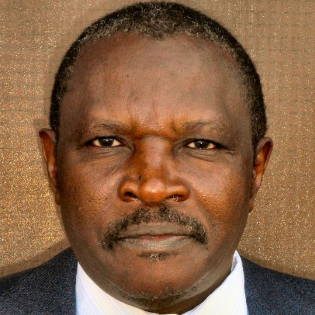International Journal of Computer Network and Information Security (IJCNIS)
IJCNIS Vol. 6, No. 7, 8 Jun. 2014
Cover page and Table of Contents: PDF (size: 575KB)
Forward Error Correction Convolutional Codes for RTAs’ Networks: An Overview
Full Text (PDF, 575KB), PP.19-27
Views: 0 Downloads: 0
Author(s)
Index Terms
FEC, Convolutional Codes, Real Time Applications, Burst errors, Sequential Decoding, Viterbi Decoding
Abstract
For more than half a century, Forward Error Correction Convolutional Codes (FEC-CC) have been in use to provide reliable data communication over various communication networks. The recent high increase of mobile communication services that require both bandwidth intensive and interactive Real Time Applications (RTAs) impose an increased demand for fast and reliable wireless communication networks. Transmission burst errors; data decoding complexity and jitter are identified as key factors influencing the quality of service of RTAs implementation over wireless transmission media. This paper reviews FEC-CC as one of the most commonly used algorithm in Forward Error Correction for the purpose of improving its operational performance. Under this category, we have analyzed various previous works for their strengths and weaknesses in decoding FEC-CC. A comparison of various decoding algorithms is made based on their decoding computational complexity.
Cite This Paper
Salehe I. Mrutu, Anael Sam, Nerey H. Mvungi, "Forward Error Correction Convolutional Codes for RTAs' Networks: An Overview", International Journal of Computer Network and Information Security(IJCNIS), vol.6, no.7, pp.19-27, 2014. DOI:10.5815/ijcnis.2014.07.03
Reference
[1]K. Yu, M. Gidlund, J. ?kerberg, and M. Bj?orkman, "Reliable and low latency transmission in industrial wireless sensor networks," Procedia Computer Science, vol. 5, pp. 866-873, 2011.
[2]S. Liumeng, "Application and Principle of Error Corrected Encoding Technology," Energy Procedia, Elsevier Ltd., vol. 13, pp. 9087-9092, 2011.
[3]H. Sijia and Z. Zexi, "Principles of FECs with evaluating different types of FEC used in the Internet and wireless networks," in Electronics, Communications and Control (ICECC), 2011 International Conference on, 2011, pp. 2181-2184.
[4]A. Mohamed, M. Abd-Elnaby, and S. A. El-dolil, "Performance Evaluation of Adaptive LDPC Coded Modulation Cooperative Wireless Communication System with Best-Relay Selection," International Journal of Digital Information and Wireless Communications (IJDIWC), vol. 4, pp. 155-168, 2014.
[5]S. I. Mrutu, S. Kalolo, M. Byanyuma, C. Nyakyi, and A. Sam, "Bandwidth Aware FEC Algorithms for Wireless Communication Systems," Control Theory and Informatics, vol. 3, pp. 8-13, 2013.
[6]M. I. García Planas, E. M. Souidi, and L. E. Um, "Decoding algorithm for convolutional codes under linear systems point of view," presented at the The 8th WSEAS International Conference on Circuits, Systems, Signal and Telecommunications (CSST '14), Tenerife, Spain, 2014.
[7]S. Virabtamath and G. Attimard, "Impact of constraint length on performance of Convolutional CODEC in AWGN channel for image application," International Journal of Engineering Science and Technology, vol. 2, pp. 4696-4700, 2010.
[8]S. Kalolo, S. I. Mrutu, C. Nyakyi, M. Byanyuma, and A. Sam, "Toward Efficient Resource Utilizations in Wireless Cellular Networks: A Case Study of Tanzania," International Journal of Electrical Electronics and Telecommunication Engineering,, vol. 44, pp. 1161-1165, 2013.
[9]ITU-ICT-Facts-and-Figures. (2013). The World in 2013: ICT Facts and Figures. Available: http://www.itu.int/en/ITUD/Statistics/Documents/facts/ICTFactsFigures2013.pdf
[10]Cisco-Visual-Networking-Index, "Global Mobile Data Traffic Forecast Update, 2012-2017," http://www.cisco.com/en/US/solutions/collateral/ns341/ns525/ns537/ns705/ns827/white_paper_c11-520862.html,, 2013.
[11]V. K?ivánek, "Enhancement in the Protection of Transmitted Data," International Journal of Computer Science and Network Security, vol. 8, pp. 95-98, 2008.
[12]M. R. Hueda, C. Rodríguez, and C. Marqués, "Enhanced-performance video transmission in multicode CDMA wireless systems using a feedback error control scheme," in Global Telecommunications Conference, 2001. GLOBECOM'01. IEEE, 2001, pp. 619-626.
[13]N. Hajlaoui, I. Jabri, and M. B. Jemaa, "Experimental Performance Evaluation and Frame Aggregation Enhancement in IEEE 802.11 n WLANs," International Journal of Communication Networks and Information Security (IJCNIS), vol. 5, pp. 48-58, 2013.
[14]A. Y. Taqa, L. S. Ng, and A. A. Joshi, "The Challenges of Using Multi Computing in Real Time Visual Applications," International Journal of Computer Science and Engineering Survey (IJCSES), vol. 2, pp. 1-14, 2011.
[15]J. Dyck, C. Gutwin, and D. Makaroff, "Adaptive forward error correction for real-time groupware," in Proceedings of the 17th ACM international conference on Supporting group work, 2012, pp. 121-130.
[16]H. Zhang, W. Jiang, J. Zhou, Z. Chen, and J. Li, "M3FEC: Joint Multiple Description Coding and Forward Error Correction for Interactive Multimedia in Multiple Path Transmission," Tsinghua Science & Technology, vol. 16, pp. 320-331, 2011.
[17]G. Forney Jr, "Review of random tree codes," NASA Ames Research Center, Moffett Field, CA, USA, Tech. Rep. NASA CR73176, 1967.
[18]S. Nouh, I. Chana, and M. Belkasmi, "Decoding of Block Codes by using Genetic Algorithms and Permutations Set," International Journal of Communication Networks and Information Security (IJCNIS), vol. 5, pp. 201-209, 2013.
[19]B. Forouzan, C. Coombs, and S. C. Fegan, Introduction to data communications and networking: McGraw-Hill, Inc., 1997.
[20]Y. S. Han and P. N. Chen, Sequential decoding of convolutional codes: Wiley Online Library, 2002.
[21]J. Wozencraft, "Sequential Decoding for Reliable Communications," Lab. Electron., MIT Tech. Rep, vol. 325, 1957.
[22]J. M. Wozencraft and B. Reiffen, Sequential decoding vol. 290: MIT Press Cambridge, MA, 1961.
[23]R. Fano, "A heuristic discussion of probabilistic decoding," IEEE Transactions on Information Theory, vol. 9, pp. 64-74, 1963.
[24]J. Anderson and S. Mohan, "Sequential coding algorithms: A survey and cost analysis," Communications, IEEE Transactions on, vol. 32, pp. 169-176, 1984.
[25]A. Kakacak and T. Kocak, "Design and implementation of high throughput bidirectional Fano decoding," in Industrial Electronics and Applications (ICIEA), 2013 8th IEEE Conference on, 2013, pp. 1670-1675.
[26]H. P. Kumar, U. Sripati, K. R. Shetty, and B. S. Shankarananda, "Soft Decision Fano Decoding of Block Codes Over Discrete Memoryless Channel Using Tree Diagram," Journal of Electrical Engineering, vol. 63, pp. 59-64, 2012.
[27]G. Forney Jr, "Final report on a coding system design for advanced solar missions," Contract NAS2 {3637, NASA Ames Research Center, CA, 1967.
[28]R. Xu, T. Kocak, G. Woodward, and K. Morris, "Throughput improvement on bidirectional Fano algorithm," in Proceedings of the 6th International Wireless Communications and Mobile Computing Conference, 2010, pp. 276-280.
[29]K. S. Zigangirov, "Some sequential decoding procedures," Problemy Peredachi Informatsii, vol. 2, pp. 13-25, 1966.
[30]F. Jelinek, "Fast sequential decoding algorithm using a stack," IBM Journal of Research and Development, vol. 13, pp. 675-685, 1969.
[31]J. Geist, "Search properties of some sequential decoding algorithms," Information Theory, IEEE Transactions on, vol. 19, pp. 519-526, 1973.
[32]S. Lin and D. J. Costello, "Error Correcting Coding: Fundamentals and Applications," ed: Prentice Hall, Englewood Cliffs, NJ, 1983.
[33]M. S. Ryan and G. R. Nudd, "The viterbi algorithm," Technical Report. Department of Computer Science, Coventry, UK., 1993.
[34]L. Liu, J. K. Wang, X. Song, and Y. H. Han, "Improved Stack Algorithm for MIMO Systems," Applied Mechanics and Materials, vol. 333, pp. 666-669, 2013.
[35]L. Liu, J. Wang, D. Yan, R. Du, and B. Wang, "Improved Stack Algorithm for MIMO Wireless Communication Systems," in Intelligent Computing and Information Science, ed: Springer, 2011, pp. 592-598.
[36]J. Hagenauer and C. Kuhn, "The list-sequential (LISS) algorithm and its application," Communications, IEEE Transactions on, vol. 55, pp. 918-928, 2007.
[37]I. Jacobs, "Practical applications of coding," Information Theory, IEEE Transactions on, vol. 20, pp. 305-310, 1974.
[38]A. Viterbi, "Error bounds for convolutional codes and an asymptotically optimum decoding algorithm," Information Theory, IEEE Transactions on, vol. 13, pp. 260-269, 1967.
[39]V. Gupta and C. Verma, "My Viterbi vs MATLAB Viterbi," International Journal of Engineering and Advanced Technology (IJEAT), vol. 2, pp. 389-391, 2012.
[40]C. Langton, "Tutorial 12 Coding and decoding with Convolutional Codes," Complex2Real. com Complex Communications Technology Made Easy, 1999.
[41]A. Viterbi, "Convolutional codes and their performance in communication systems," Communication Technology, IEEE Transactions on, vol. 19, pp. 751-772, 1971.
[42]E. Liu, "Convolutional coding & Viterbi algorithm," IEEE S 一, vol. 72, pp. 11-16, 2004.
[43]K. Arunlal and S. Hariprasad, "AN EFFICIENT VITERBI DECODER," International Journal of Computer Science, Engineering & Applications, vol. 2, pp. 95-110, 2012.
[44]W. FS FILHO and D. S. E. S. EH, "EA,“Adaptive forward error correction for interactive streaming over the Internet”," in IEEE Globecom'06, 2006, pp. 1-6.
[45]J. Poctavek, K. Kotuliaková, J. Polec, M. Osadsky, and S. Ondru?ová, "Throughput Parameter Optimization of Adaptive ARQ/HARQ Scheme," International Journal of Communication Networks and Information Security (IJCNIS), vol. 3, pp. 89-95, 2011.
[46]T.-Y. Chen, N. Seshadri, and B.-Z. Shen, "Is feedback a performance equalizer of classic and modern codes?," in Information Theory and Applications Workshop (ITA), 2010, 2010, pp. 1-5.
[47]M. Francis and R. Green, "Forward Error Correction in Digital Television Broadcast Systems," XILINX, White Paper: Virtex-5, Virtex-4, Spartan-3, LogiCORE, WP27, 2007.
[48]H. Liu, H. Ma, M. El Zarki, and S. Gupta, "Error control schemes for networks: An overview," Mobile Networks and Applications, vol. 2, pp. 167-182, 1997.
[49]L. Sari, "Effects of Puncturing Patterns on Punctured Convolutional Codes," Telkomnika, vol. 10, pp. 759-770, 2012.
[50]J. Cain, G. Clark, and J. M. Geist, "Punctured convolutional codes of rate (n-1)/n and simplified maximum likelihood decoding (Corresp.)," Information Theory, IEEE Transactions on, vol. 25, pp. 97-100, 1979.
[51]J. Hagenauer, "Rate-compatible punctured convolutional codes (RCPC codes) and their applications," Communications, IEEE Transactions on, vol. 36, pp. 389-400, 1988.
[52]F. Escribano and A. Tarable, "Interleaver design for parallel concatenated chaos-based coded modulations," IEEE COMMUNICATIONS LETTERS, vol. 17, pp. 834-837, 2013.
[53]G. Wang, A. Vosoughi, H. Shen, J. R. Cavallaro, and Y. Guo, "Parallel interleaver architecture with new scheduling scheme for high throughput configurable turbo decoder," in Circuits and Systems (ISCAS), 2013 IEEE International Symposium on, 2013, pp. 1340-1343.
[54]T.-Y. Chen, N. Seshadri, and R. D. Wesel, "Incremental redundancy: A comparison of a sphere-packing analysis and convolutional codes," in Information Theory and Applications Workshop (ITA), 2011, 2011, pp. 1-5.
[55]Z. Xu, S. Guan, and F. Yao, "A novel low-time-delay convolutional interleaver and its performance," in Information and Communications Technologies (IETICT 2013), IET International Conference on, 2013, pp. 208-212.


